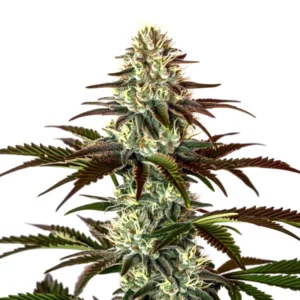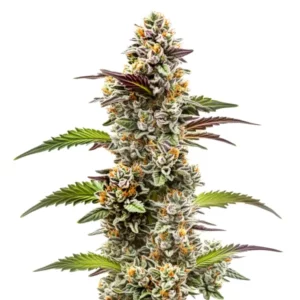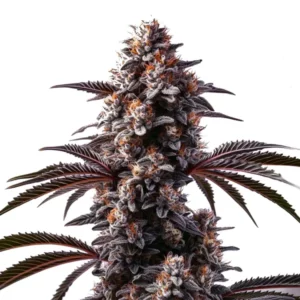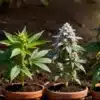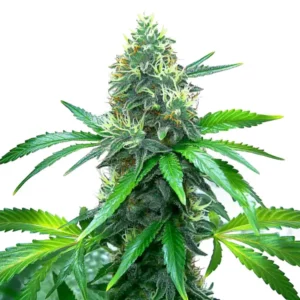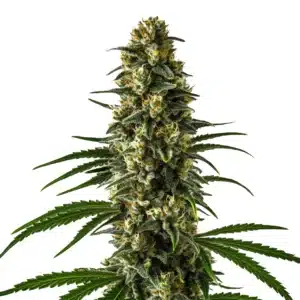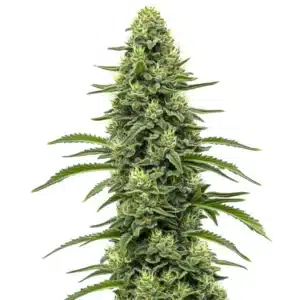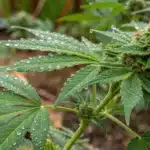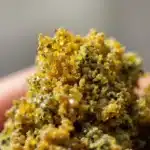
Plant Latex vs Cannabis Resin
Diving into the world of plant latex and cannabis resin reveals two fascinating substances with unique properties and applications. Plant latex is a milky fluid found in certain plants like rubber trees, while cannabis resin is a sticky substance produced by cannabis plants. Both have their distinct uses, but when it comes to plant latex vs cannabis resin, each has its own set of benefits and challenges.
Latex is often used in products such as gloves, balloons, and medical supplies due to its elasticity and durability. Meanwhile, cannabis resin is prized for its concentration of cannabinoids, making it a key component in the production of THC and CBD-rich products. Comparing latex and cannabis resin properties highlights their different roles in various industries.
Recommended Strains
Gelato
|
|
THC | 27% (High) |
|
|
Type | Feminized |
|
|
Yield | High |
|
|
Phenotype | 50% Indica / 50% Sativa |
Blue Dream
|
|
THC | 17% - 24% (Medium) |
|
|
Type | Feminized |
|
|
Yield | High |
|
|
Phenotype | 50% Indica / 50% Sativa |
Plant-derived latex versus cannabis resin benefits may vary depending on the intended use. Latex’s strength and flexibility make it ideal for industrial applications, while cannabis resin’s psychoactive properties offer therapeutic and recreational uses. Knowing how each is extracted and utilized can provide deeper insights into their respective advantages.
Differences Between Plant Latex and Cannabis Resin
The differences between plant latex and cannabis resin begin with their origins and composition. Latex is a complex emulsion of compounds, primarily consisting of water, sugars, resins, oils, tannins, alkaloids, and proteins. It’s typically extracted from the bark of trees like the Hevea brasiliensis. On the other hand, cannabis resin is a viscous substance rich in cannabinoids and terpenes, extracted from the trichomes on cannabis plants.
When discussing plant latex extraction compared to cannabis resin extraction, latex is harvested by making incisions in the bark of rubber trees and collecting the fluid that exudes. This process is called tapping. Cannabis resin extraction involves separating the trichomes from the plant material, using methods like dry sifting or ice water extraction. Each method yields a product used for different purposes.
Knowing the differences between plant latex and cannabis resin is crucial for determining their respective applications. Plant latex is commonly associated with industrial and medical uses, while cannabis resin finds its niche in health and wellness. The key to harnessing their potential lies in recognizing the unique qualities each substance offers.
Moreover, the processing techniques involved in extracting these substances impact their final quality and usability. While the tapping process for latex is relatively straightforward, ensuring consistency and purity in cannabis resin extraction requires more sophisticated methods. This distinction highlights the importance of technological advancements in maximizing the benefits of plant latex vs cannabis resin.
Plant Latex Uses Versus Cannabis Resin Applications
Plant latex uses are widespread across various industries. It’s essential for manufacturing everyday items such as gloves, tires, and adhesives. Its natural elasticity and biodegradability make it a popular choice in environmentally conscious markets. In contrast, cannabis resin applications primarily focus on health and wellness sectors, leveraging its concentration of THC and CBD for therapeutic effects.
For example, the cannabis strain “Gelato” from Blimburn Seeds is celebrated for its potent resin production, making it ideal for creating high-quality concentrates and oils. Such strains are often used to produce edibles, tinctures, and topical treatments that harness the medicinal properties of cannabis resin.
The versatility of plant latex extends beyond conventional uses, finding its way into innovative fields such as biodegradable packaging and eco-friendly textiles. These emerging applications underscore its adaptability and potential to drive sustainable solutions. On the other hand, cannabis resin continues to be a cornerstone in the development of novel therapeutic products, particularly in the field of alternative medicine.
Comparing latex and cannabis resin properties reveals their complementary roles in modern industry and healthcare. While plant latex offers practical solutions for everyday products, cannabis resin provides an avenue for advancements in therapeutic treatments. This dynamic interplay between functionality and healing potential is a testament to the diverse benefits these substances offer.
Promos & Deals
Practical Examples of Plant-Derived Latex and Cannabis Resin Benefits
Real-life examples of plant-derived latex benefits include its use in medical gloves, which provide a protective barrier against pathogens. This elasticity and strength ensure a snug fit, which is crucial for medical professionals. Latex’s biodegradability also supports environmental sustainability, a growing concern in today’s market.
In contrast, cannabis resin benefits are evident in its use in pain management and mental health treatments. The strain “Blue Dream” from Blimburn Seeds is known for its rich resin content, which is ideal for producing cannabis oils that help in alleviating chronic pain and anxiety. Users often report a balanced high that aids in relaxation without drowsiness.
Beyond medical applications, plant-derived latex is increasingly being utilized in sustainable construction materials, offering eco-friendly alternatives in the building industry. Its natural properties contribute to energy efficiency and reduced environmental impact, aligning with global efforts toward green building practices.
Similarly, cannabis resin has paved the way for breakthroughs in personalized medicine, where its unique cannabinoid profiles can be tailored to individual health needs. This advancement enhances the therapeutic efficacy of cannabis-based products, providing more precise and effective treatment options for patients.
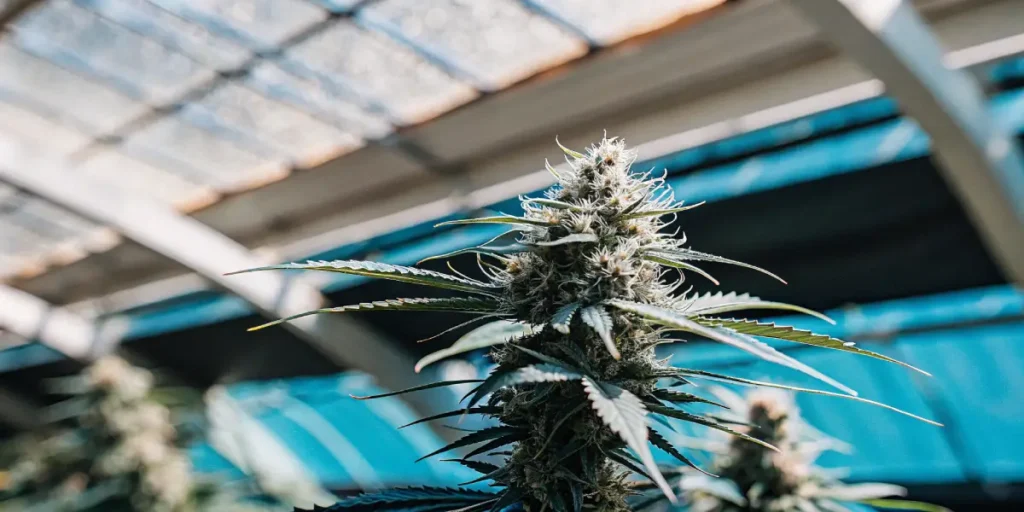
Comparing Latex and Cannabis Resin Extraction Techniques
When comparing latex and cannabis resin extraction techniques, the methods vary significantly. Latex extraction involves a straightforward tapping process, while cannabis resin extraction requires more intricate techniques like solvent-based extraction or rosin pressing. Each method affects the quality and type of final product obtained.
The strain “Gorilla Glue 4” from Blimburn Seeds is famous for its high resin yield, making it perfect for extraction enthusiasts. Using techniques like solventless rosin pressing can produce pure and potent cannabis concentrates, preserving the strain’s natural flavors and aromas. This process is popular among those seeking high-quality cannabis products.
Plant latex extraction compared to cannabis resin extraction reveals differing priorities in terms of efficiency and product purity. While the tapping process for latex is optimized for high-volume production, cannabis resin extraction focuses on preserving cannabinoid and terpene integrity, essential for therapeutic applications.
Advancements in extraction technologies continue to shape the future of both industries. In latex production, innovations aim to enhance sustainability and reduce environmental impact, whereas in cannabis resin extraction, the focus is on refining methods to achieve higher purity and potency in the final product. These evolving techniques underscore the ongoing quest to maximize plant latex vs cannabis resin benefits.
FAQs About Plant Latex and Cannabis Resin
What are the main differences between plant latex and cannabis resin?
The main differences between plant latex and cannabis resin lie in their composition and uses. Plant latex is a water-based emulsion containing proteins and sugars, primarily used for manufacturing products like gloves and tires. Cannabis resin, rich in cannabinoids and terpenes, is used in the health and wellness industry for its psychoactive and therapeutic effects.
Latex extraction involves tapping rubber trees, while cannabis resin is extracted from cannabis plant trichomes using methods like dry sifting or solvent extraction. These differences highlight their distinct roles and applications in various industries.
Knowing the differences between plant latex and cannabis resin is essential for selecting the appropriate material for specific needs. While latex offers versatility in industrial applications, cannabis resin is indispensable in creating effective health and wellness products, each serving a unique purpose based on their inherent properties.
The choice between plant latex vs cannabis resin ultimately depends on the desired application and outcome. Recognizing the strengths and limitations of each can lead to more informed decisions, ensuring optimal results whether in manufacturing or therapeutic contexts.
How is plant latex used compared to cannabis resin?
Plant latex is primarily used in industrial and medical products due to its elasticity and strength. Common applications include medical gloves, balloons, and adhesives. Its biodegradability also makes it a sustainable choice for eco-friendly products.
In contrast, cannabis resin is used in the production of THC and CBD-rich products. It’s applied in health and wellness sectors for its therapeutic effects, available in forms like oils, tinctures, and edibles. This makes cannabis resin a versatile ingredient in alternative medicine.
Expanding on plant latex uses versus cannabis resin applications reveals a wide array of possibilities. Latex’s role in environmentally conscious markets continues to grow, with new applications in biodegradable consumer goods, while cannabis resin’s applications in holistic healing and wellness continue to expand.
The balance between industrial utility and therapeutic potential defines plant latex vs cannabis resin applications, highlighting the importance of selecting the right material for each context. By knowing their respective benefits, industries can leverage these natural resources for innovative and sustainable solutions.
What are the benefits of plant-derived latex versus cannabis resin?
Plant-derived latex benefits include elasticity, durability, and biodegradability, making it ideal for products requiring flexibility and environmental considerations. It’s widely used in medical and industrial fields.
Cannabis resin benefits include its concentration of cannabinoids, providing therapeutic effects for pain relief, anxiety, and more. Strains like “Gelato” and “Blue Dream” are popular for their resin production, offering a range of applications in alternative medicine.
Exploring plant-derived latex versus cannabis resin benefits further reveals their complementary nature in addressing diverse market needs. Latex’s reliability and eco-friendly attributes support sustainable practices, while cannabis resin’s therapeutic potential continues to drive innovation in medical treatments.
The interplay of plant latex and cannabis resin benefits underscores the importance of knowing their distinct roles. By harnessing their respective strengths, industries can develop products that meet both functional and therapeutic demands, catering to a wide range of consumer preferences.
How do extraction methods differ for latex and cannabis resin?
Extraction methods for latex and cannabis resin differ significantly. Latex is extracted by making incisions in rubber tree bark, a process known as tapping. This method is straightforward and efficient for mass production.
Cannabis resin extraction involves separating trichomes from plant material using techniques like dry sifting or ice water extraction. These methods focus on preserving cannabinoids and terpenes, essential for producing high-quality cannabis products.
Comparing latex and cannabis resin extraction techniques highlights the nuances involved in obtaining these valuable substances. While tapping is well-established for latex, cannabis resin extraction continues to evolve, with new methods enhancing purity and potency for specialized applications.
Both extraction processes reflect the broader goals of their respective industries, emphasizing efficiency and quality. Whether maximizing yields for commercial production or refining cannabinoid profiles for therapeutic use, the continued development of extraction methods is crucial in optimizing plant latex vs cannabis resin advantages.
Can you provide examples of cannabis strains high in resin?
Several cannabis strains are renowned for their high resin production. “Gorilla Glue 4” from Blimburn Seeds is one such strain, famous for its potent resin yield, making it ideal for creating strong concentrates and extracts.
Another example is “Blue Dream“, known for its balanced effects and rich resin content, suitable for producing oils and tinctures. These strains are popular among growers and users seeking to maximize the benefits of cannabis resin.
Exploring cannabis strains high in resin production offers insights into the diverse applications of cannabis resin. Strains like “Gorilla Glue 4” and “Blue Dream” exemplify the potential for creating potent and effective products, catering to both medical and recreational users.
These strains highlight the importance of selecting the right genetics to achieve desired resin yields. As growers and producers continue to refine cultivation techniques, the availability of high-resin strains will support the expanding market for cannabis-based products, enhancing the plant-derived latex versus cannabis resin landscape.




